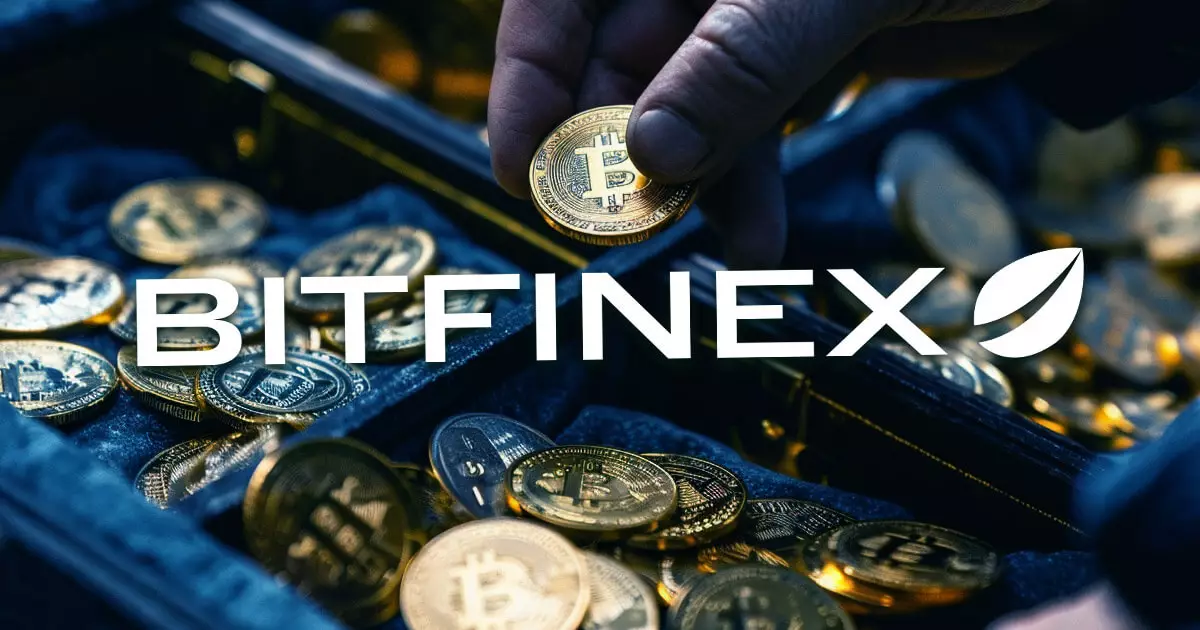The 2016 Bitfinex hack remains a watershed moment in the history of cryptocurrency exchanges, influencing both market dynamics and regulatory considerations in the years that followed. The theft of approximately 120,000 BTC, an incident that sent shockwaves throughout the crypto community, has recently come back into focus following a U.S. government filing indicating that Bitfinex may be deemed the sole entity eligible for restitution connected to the breach. Analyzing the implications of this development not only sheds light on the past but also highlights important questions surrounding the future of asset recovery, market behavior, and user trust.
In the recently released filing, U.S. authorities articulated that they are unaware of any individual who qualifies as a victim under the Crime Victims’ Rights Act (CVRA) or for restitution under the Mandatory Victims Restitution Act (MVRA), aside from Bitfinex itself. This assertion positions Bitfinex as the principal victim impacted by the hack, which is significant as it streamlines potential restitution efforts. What this suggests is a singular focus on returning assets primarily to the exchange rather than redistributing them to individual account holders.
However, this raises concerns regarding equity and fairness. While Bitfinex acted to mitigate damage by adjusting customer balances and issuing BFX tokens — a form of customer compensation that allowed for some recovery of lost funds — the current stance may overshadow individual losses incurred by account holders. By leaning towards a model focused on the exchange, the sentiment among customers might turn towards skepticism, as most are left without direct recompense.
Following the hack, Bitfinex implemented a highly controversial strategy that involved reducing account balances by 36% to cover the losses. After issuing BFX tokens, which customers could eventually redeem or convert into shares of Bitfinex’s parent company, iFinex, the exchange sought to restore credibility and operations. By April 2017, the complete redemption of BFX tokens marked a significant recovery milestone for Bitfinex. This landmark moment reflects the resilience of the exchange amid severe market turbulence and criticisms regarding its handling of the hack’s aftermath.
The government’s recent asset seizure — approximately 94,643 BTC, valued at around $3.6 billion at the time — and subsequent discussions surrounding the released funds have implications for relationship dynamics between crypto exchanges and law enforcement. Bitfinex’s proactive approach in collaborating with authorities to reclaim stolen assets underscores a necessity in the crypto space: robust partnerships with regulatory bodies to ensure accountability and stability.
Token Dynamics and Future Investments
With the recent recovery of funds, Bitfinex has committed to redeeming Recovery Right Tokens (RRTs) issued after the hack. This move establishes a contractual obligation to existing token holders, ensuring that these funds are allocated to address outstanding claims. Bitfinex has outlined plans to utilize up to 80% of any remaining assets to benefit UNUS SED LEO token holders, a strategy that indicates a focus on both honoring existing commitments and potentially enhancing the token’s value through asset recovery.
This approach speaks volumes about Bitfinex’s broader philosophy towards user engagement and market stability. While individual RRT holders may not find immediate gains due to strong contractual obligations, LEO token holders might appreciate the anticipated indirect benefits as the exchange successfully navigates the complexities of asset recovery. The long-term implications for LEO tokens may ultimately hinge on the perceived effectiveness of Bitfinex’s recovery efforts—not just in the immediate aftermath of the hack but also in cultivating trust within the investor community going forward.
The Bigger Picture: Security and Trust in Crypto
The aftermath of the Bitfinex hack illustrated critical vulnerabilities in the crypto landscape and prompted discussions about security protocols across exchanges. Simultaneously, it established a precedent for how companies address breaches and recover from substantial losses. This historical case remains relevant as new regulatory frameworks emerge, demanding increased transparency and accountability within the industry.
As the narrative continues to unfold, traders remain attentive. The slight drop of 0.7% in Bitcoin’s value following the latest government filing indicates palpable concerns regarding the potential influx of Bitcoin back into circulation. This apprehension reflects broader market sentiments, where confidence can be easily swayed by news of recoveries or setbacks in legal proceedings.
The Bitfinex incident serves both as a cautionary tale and a potential roadmap for navigating future crises in the cryptocurrency sphere. As the exchange seeks the return of stolen assets, the broader community is left to ponder the implications: how will this scenario shape trust, market dynamics, and the evolving relationship between digital asset exchanges and regulatory frameworks? The answers may have lasting effects, reshaping the contours of cryptocurrency trading and investment in years to come.


Leave a Reply